T.Loafer (閑隅) seats just 10 people, but the tiny cafe has already garnered plenty of media attention for its unique decor.
Its exterior is lined with more than 20 window frames salvaged from old houses and painted in a faded rainbow of colors, while the inside feels comfortably lived in, with large skylights, vintage furniture and shelves lined with books. The cafe has been profiled in the Apple Daily, served as the backdrop for a cover story on singer Yoga Lin (林宥嘉) in The Big Issue and is frequently booked for wedding photo shoots.
But owner Hsu Cheng-wei (徐政瑋) had only one goal in mind when he opened T.Loafer in the spring: to create an intimate cafe that would double as a platform for fair trade goods and items made by Taiwanese artisans.
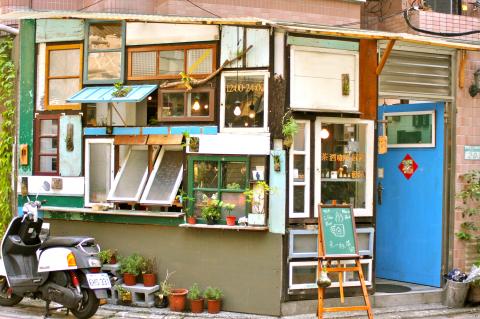
Photo: Catherine Shu, Taipei Times
(T.Loafer’s Chinese name means “small corner,” while the T in its English name stands for the tea served there and “loafer” is what Hsu hopes customers will become while at the cafe.)
Hsu originally wanted to open a hostel for young travelers, but he nixed that plan when he realized that operating costs would be too high. Instead, he focused on his work as a community developer in Sindian, where he works with studio Watch!Touch (手樸隨想), which creates accessories made with natural textiles and dyes.
Over the Lunar New Year, however, Hsu decided he was ready to try his hand at operating a cafe. He had spent his spare time wandering around Taipei City’s lanes and alleyways while studying real estate at university, and was familiar with the neighborhood near Lishui Street (麗水街) in the Shida area.
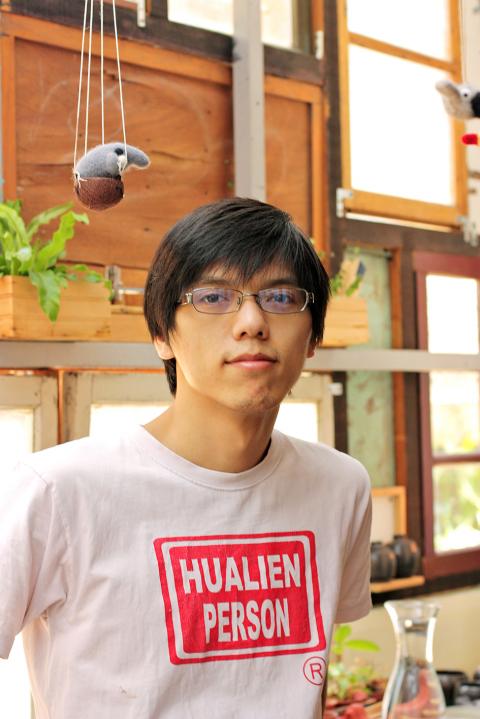
Photo: Catherine Shu, Taipei Times
“I found this space online and thought it was ideal,” Hsu says. “It’s a bit small, but the neighborhood, the environment and the lighting were all perfect.”
Though it is just blocks away from busy Jinshan South Road (金山南路), few cars and mopeds pass by T.Loafer. Instead, pedestrians wandering down the plant-lined alley provide subjects for people watching from T.Loafer’s wall of windows.
When Hsu rented the space, it had an all-white interior. With the help of friends, he completely redecorated the cafe over two months. He replaced the floorboards, added a small, recycled wood bar by the windows and painted the walls a homey shade of olive green. Instant film portraits, gifts from photographers who work in a darkroom downstairs, are taped to shelves.
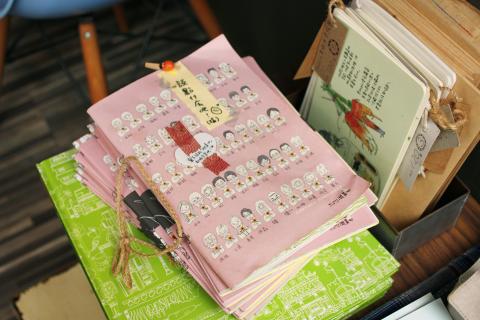
Photo: Catherine Shu, Taipei Times
A gallery of prints by artist Kuo I-kuan (郭以寬) of Chiuzen (沾手) hangs near the entrance, while shelves are lined with handmade items, such as brass and stone jewelry by Su Studio, wallets and scarves by Watch!Touch, hand-carved candles by Izy Home (家?形) and small houseplants in concrete planters by Goodmore.
Other goods include wooden bowls and clay coasters made by craftspeople in Yunlin County and Hsu’s hometown of Hualien.
Despite its popularity as a photo shoot location, Hsu hopes customers will feel free to treat T.Loafer as a second home.
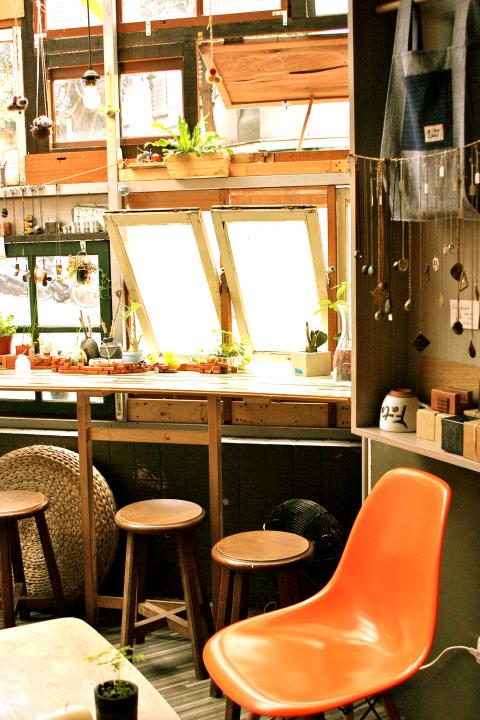
Photo: Catherine Shu, Taipei Times
“A lot of cafes now have very nice, professionally decorated interiors, but the trade-off is that people find it harder to relax in them. We thought why not decorate the cafe by ourselves, the way people decorate their own houses? We want T.Loafer to be a place where people can feel at ease and stay a little while.”
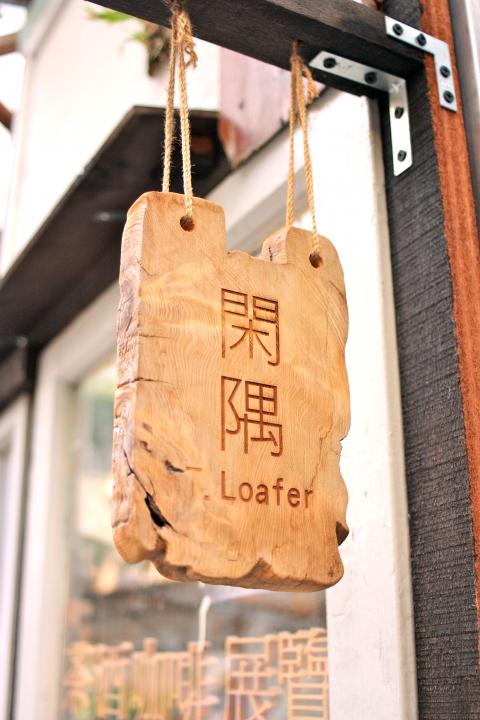
Photo: Catherine Shu, Taipei Times
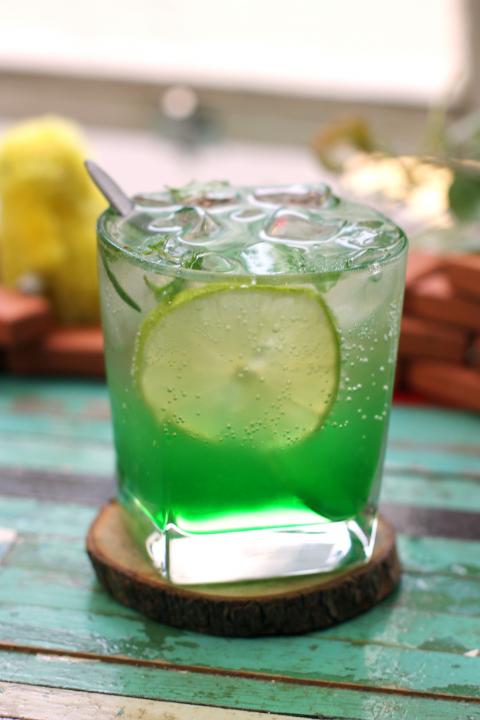
Photo: Catherine Shu, Taipei Times
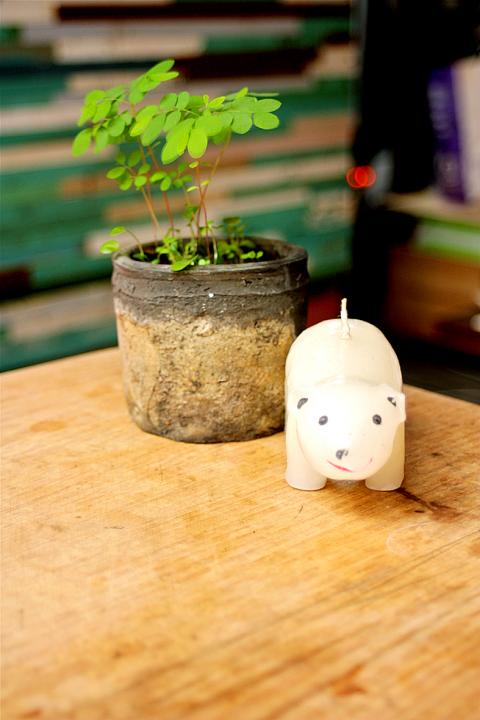
Photo: Catherine Shu, Taipei Times
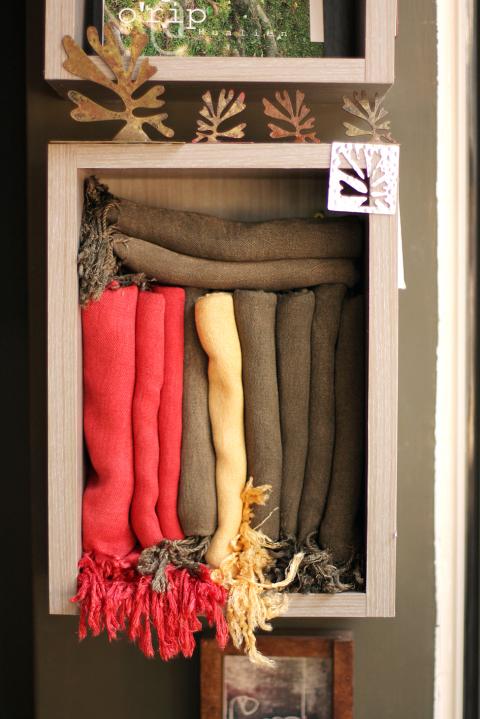
Photo: Catherine Shu, Taipei Times

Late last month Philippines Foreign Affairs Secretary Theresa Lazaro told the Philippine Senate that the nation has sufficient funds to evacuate the nearly 170,000 Filipino residents in Taiwan, 84 percent of whom are migrant workers, in the event of war. Agencies have been exploring evacuation scenarios since early this year, she said. She also observed that since the Philippines has only limited ships, the government is consulting security agencies for alternatives. Filipinos are a distant third in overall migrant worker population. Indonesia has over 248,000 workers, followed by roughly 240,000 Vietnamese. It should be noted that there are another 170,000
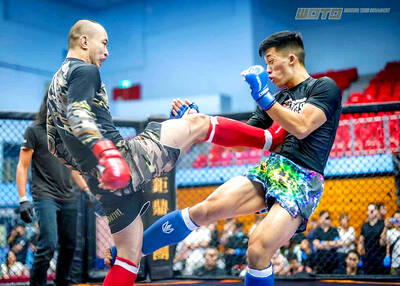
Enter the Dragon 13 will bring Taiwan’s first taste of Dirty Boxing Sunday at Taipei Gymnasium, one highlight of a mixed-rules card blending new formats with traditional MMA. The undercard starts at 10:30am, with the main card beginning at 4pm. Tickets are NT$1,200. Dirty Boxing is a US-born ruleset popularized by fighters Mike Perry and Jon Jones as an alternative to boxing. The format has gained traction overseas, with its inaugural championship streamed free to millions on YouTube, Facebook and Instagram. Taiwan’s version allows punches and elbows with clinch striking, but bans kicks, knees and takedowns. The rules are stricter than the

“Far from being a rock or island … it turns out that the best metaphor to describe the human body is ‘sponge.’ We’re permeable,” write Rick Smith and Bruce Lourie in their book Slow Death By Rubber Duck: The Secret Danger of Everyday Things. While the permeability of our cells is key to being alive, it also means we absorb more potentially harmful substances than we realize. Studies have found a number of chemical residues in human breast milk, urine and water systems. Many of them are endocrine disruptors, which can interfere with the body’s natural hormones. “They can mimic, block
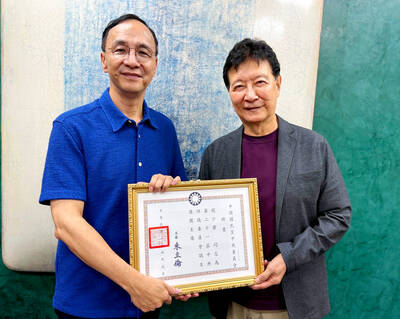
Next week, candidates will officially register to run for chair of the Chinese Nationalist Party (KMT). By the end of Friday, we will know who has registered for the Oct. 18 election. The number of declared candidates has been fluctuating daily. Some candidates registering may be disqualified, so the final list may be in flux for weeks. The list of likely candidates ranges from deep blue to deeper blue to deepest blue, bordering on red (pro-Chinese Communist Party, CCP). Unless current Chairman Eric Chu (朱立倫) can be convinced to run for re-election, the party looks likely to shift towards more hardline